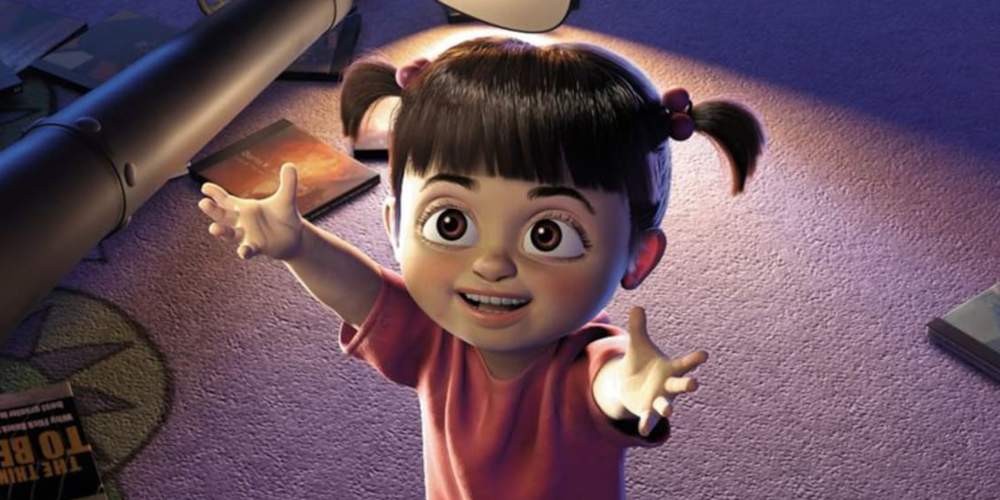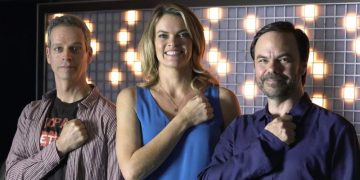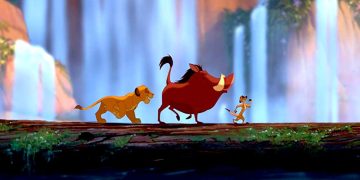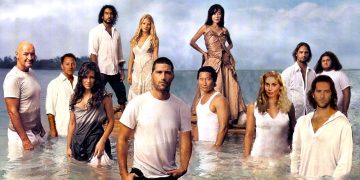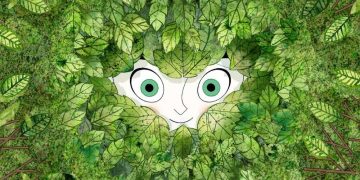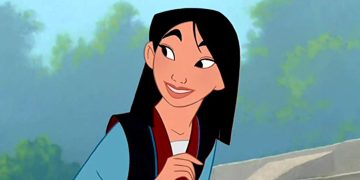Animation studios love to insert easter eggs—small details that can easily slip under your radar but have meaning if you're able to spot them—into their cartoons and movies.
For example, Pixar loves littering their films with easter eggs that hint at a broad connection between all of the movies in the Pixar universe. It's come to be known as the "Grand Unifying Theory of Pixar Movies."
The existence of easter eggs has caused fans to rewatch and more closely analyze their favorite films, leading to all kinds of theories and conclusions based on details that may or may not be red herrings.
Due to the fantastical nature of cartoons and fairy tales, they're fertile grounds for speculation and fan theories. Here are some of the best, most clever, and most head-scratching fan theories we've seen.
10. Andy's Mom Is Jessie's Original Owner (Toy Story 3)
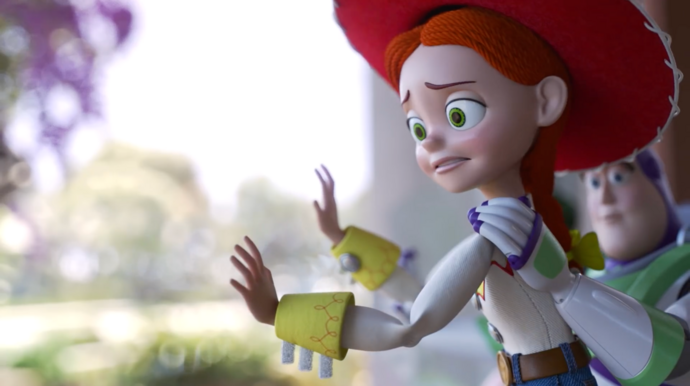
Isn't it strange how Andy from Toy Story wears the cowboy hat affiliated with Jessie, not his beloved Woody? How on Earth did he manage to nab her merch before he even owned Jessie?
One fan theory is that the hat was passed down to him by another family member. Perhaps a grown-up cousin or friend donated it to him the same way Andy donated his toys when leaving for college in Toy Story 3.
Or maybe... just maybe... it belonged to his mom.
Writer and critic Jon Negroni was the first person to theorize that all Pixar films are related, and one of his propositions is that the girl who abandoned Jessie as a child is actually Andy's mom. We don't really know much about Andy's mom from the films, but...
The hat Andy wears is missing a ribbon, indicating it to be vintage. And the timings match up perfectly: Jessie was apparently discarded some time in the 1960s and Toy Story is set in the 1990s. That puts his mom in the 30–40 age range. Pretty coincidental, don't you think?
9. Jane Is Belle's Granddaughter (Tarzan)
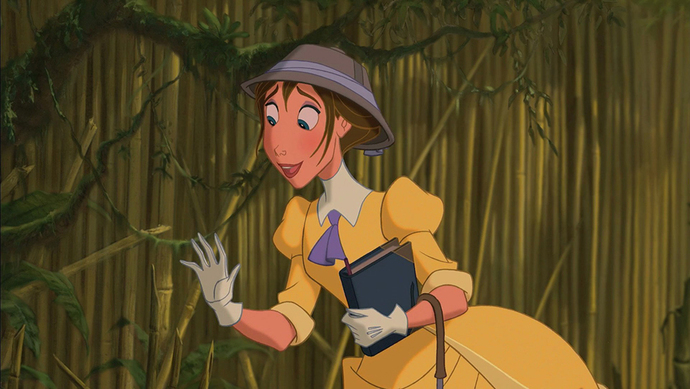
The most iconic characters from Beauty and the Beast aren't even people—they're singing teacups. The animated clock, candlestick, and teapot orchestrate the famous "Be Our Guest" song from the movie, but we swear we've seen that tea set before...
Ah yes, in Tarzan.
Trek the Gorilla can be found rocking out in the jungle using Belle's beloved china as a drumkit. The French antiques seem out of place in the African forest, so they must be a family heirloom.
Also, doesn't Jane remind you of someone? The yellow dress, brown hair, and love for books make Jane a spitting image of Belle. Would it be so far-fetched to suggest she's her granddaughter who has inherited Belle's looks, books, and teacups?
But wait, isn't Belle French and Jane American?
Yes, but according to the timeline, the French Revolution was astir during Beauty and the Beast, meaning Belle's wealth put her in danger of the guillotine. Her only option would have been to flee France... say, to the melting pot of the American Dream?
8. The Incredibles Are From a Parallel Universe (The Incredibles)
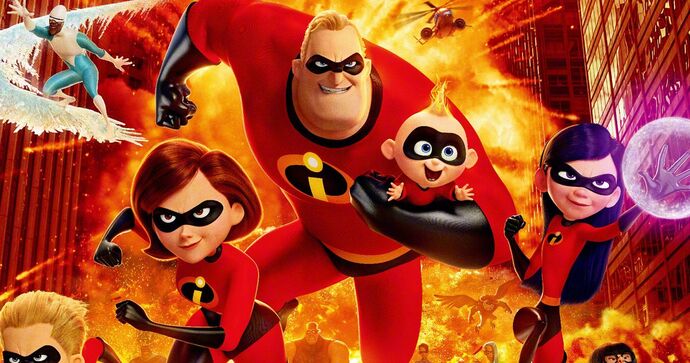
One thing that's confusing about The Incredibles is their seemingly warped timeline. Their clothes, homes, and décor resemble that of a beige 1960s, yet their technology is beyond even our years.
Mr. Incredible somehow owns a Batmobile-looking race car that's decked out in futuristic technology, and that's before his shabby little blue Chevrolet from the 1950s. In fact, if you look really closely, you can see his newspaper is dated May 16, 1962.
So what's with all the modern tech in The Incredibles?
The Pixar Wiki states that The Incredibles is set in a "60s-esque alternate universe." Note the word "esque," meaning it's not literally our 1960s. I mean, we're pretty sure there were no electronic prison cells that trap people in mid-air with laser beams back then!
The only explanation is that The Incredibles takes place in a parallel universe—one that resembles ours on the outside, but with details that are different. In this case, more advanced.
7. Aladdin Is Set in a Post-Apocalyptic Future (Aladdin)
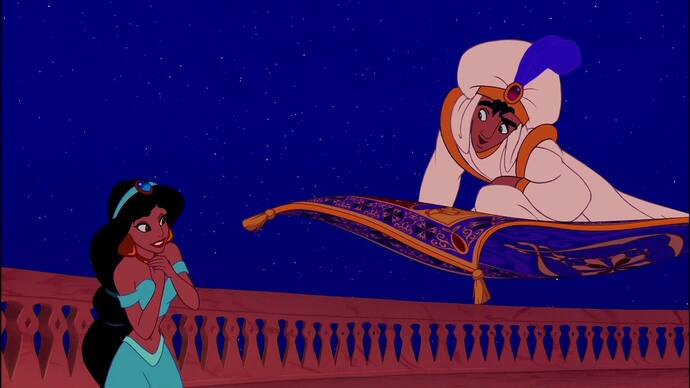
As with The Incredibles, fans have speculated that Aladdin doesn't actually take place in our world but in another version of it. Yet, instead of an alternate universe, Aladdin is thought to take place in the far future.
So far in the future, in fact, that it's after an apocalypse. In this post-apocalyptic world, only the Arabic survived (plus a few Greeks).
This theory was one of the first theories to be suggested by Pixar fans, who deduced that Aladdin's world is set in the year 10,300 at the earliest.
Where did that number come from? From Genie, of course! He says that Aladdin's outfit is "much too third-century," but he also declares that he's been stuck inside the lamp for 10,000 years.
If that's the last fashion trend he had set eyes on, then third century plus 10,000 years equals... Year 10,300.
Genie also loves to impersonate 20th century figures like Arnold Schwarzenegger and Jack Nicholson, and a nuclear war would explain the barren desert setting. Pretty interesting, huh?
6. Mother Gothel (Tangled) Is the Evil Queen (Snow White and the Seven Dwarfs)
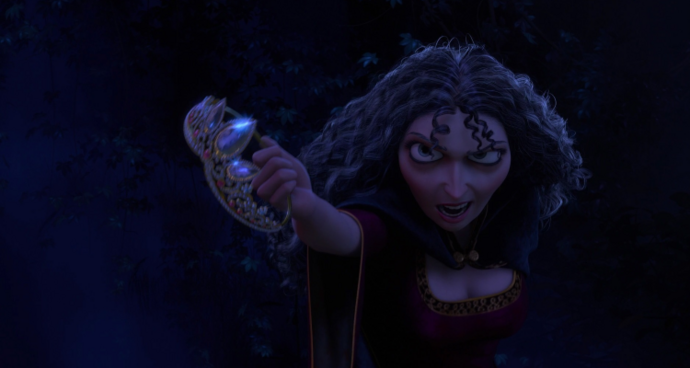
Sure, Mother Gothel and the Evil Queen may look the same, but they're in different movies with different names... so how can this be true?
Well, Mother Gothel from Tangled isn't just an evil witch; she has a thing about aging. Gothel needs Rapunzel's magical hair to keep her old age at bay, in a similar way to how the Queen uses magical potions to make herself into a withered hag in Snow White and the Seven Dwarfs.
Plus, they're both seriously messed-up mother figures who want their "daughters" kept away from the real world, and it's plausible that they share the same timeline. How? Consider this:
It's easy to place Snow White and the Seven Dwarfs in 16th century Southern Germany. The time period of Tangled, however, is a little harder to work out. Luckily, some hardcore fans have done the work for us!
From the architecture and clothing, it's generally accepted that Tangled takes place in 18th century Southern Germany. Hey, that's the same place! And only a mere two centuries apart.
With a magical flower that stops aging, the Queen could have easily lived long enough to find her second beautiful victim to her lust for youth.
5. Randall Is Andy's Monster (Toy Story) and George Sanderson Is Riley's (Inside Out)
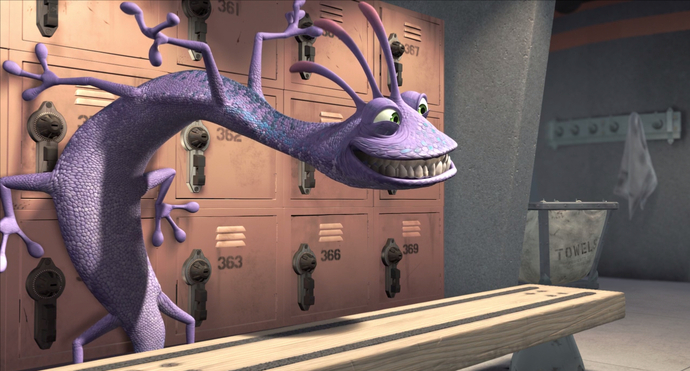
Monsters, Inc. makes the separation between the human world and the monster world very clear. Monsters can only access our world through bedroom door portals, using kids' screams for fuel but never cross-contaminating because they think our touch is poison.
Obviously, Sully and Mike realize this isn't true when Boo stumbles into their workplace poison-free. But no one really believes them, so the two universes remain largely separate, just swapping out screams for laughs.
Now, how about this: if bedroom doors are gateways to our world, surely they can lead to other Pixar movies set on (our) Earth?
How about Toy Story, for example? Although talking dolls aren't real, Toy Story is still set in the recognizable San Francisco Bay area. And since humans don't know the toys are alive, perhaps they are real after all!
If you look at Andy's wallpaper, you'll notice it's the exact same cloud print that Randall practices camouflaging in front of. Andy's neighbor Sid has a poster that appears in another doorway in Monsters, Inc., and Andy's closet door is in the background of Monsters University.
Furthermore, do any other Pixar kids have monsters? Yep! According to fans, Riley from Inside Out has George Sanderson as hers.
Riley's imaginary friend Bing Bong had an elephant nose and cotton-candy body, but the origins of his mismatching legs are never explained. The orange stripes look strikingly like George's, but because he's a monster, it's unlikely Riley can place where she's seen them before.
4. Neverland Is Actually the Afterlife (Peter Pan)
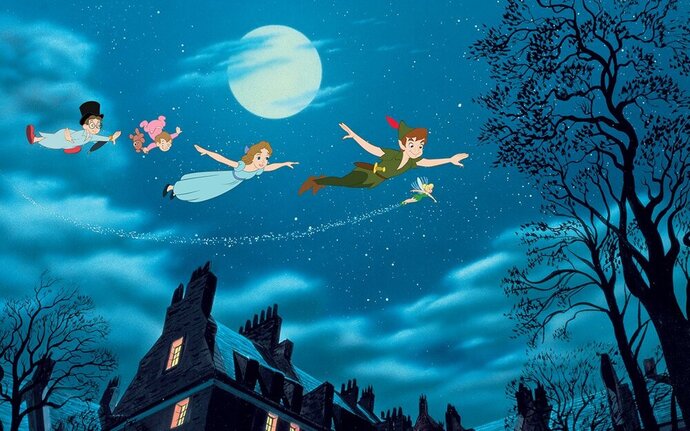
Peter Pan has been vilified multiple times, most commonly as the kidnapper of children who murders their future. Whether as hero or villains, Peter Pan can be seen as Grim Reaper-type figure.
The Darling siblings are swept away by his promise of mermaids, fairies, and magic... A child's heaven, right? Perhaps literally.
The character of Peter Pan is based on a real person: writer J.M. Barrie's brother David, who died just before his 14th birthday. That's why he can never grow up—and strong evidence for Neverland as the afterlife.
Peter, like David, dwells in a fantastical alternate world (the nicer version of the "netherworld") that Barrie places among the stars (the heavens), "second star to the right and straight on 'til morning."
3. Carl Was Dead All Along (Up)
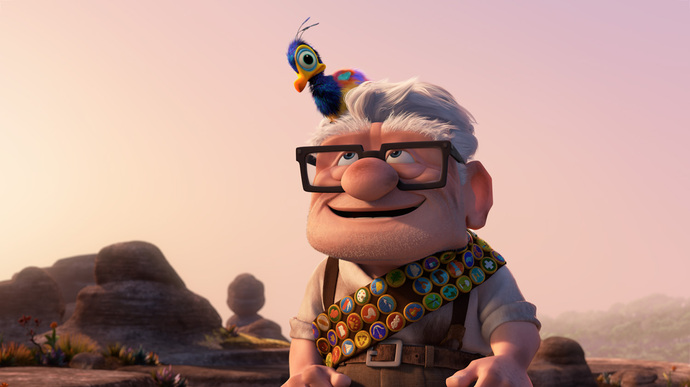
As if Up wasn't sad enough, there's a chance Carl might have been dead the entire time. Just as the name "Neverland" holds connotations of the afterlife, so too does "Paradise Falls."
Carl's ascension to heaven is made physical by his floating house, which rises up to the clouds using 20,000+ balloons.
After that harrowing montage of Carl's wife Ellie losing a child, dying in her old age, and leaving him all alone, Carl decides to move to Paradise Falls. That's where they had always dreamed of living.
But consider this: the irregular mesas of Paradise Falls resemble those of Tepui, dubbed the "house of the gods" in the language of Pémon. This only adds to the semantic field of heaven, no?
Fans suggest that Carl died in his sleep after finding out that he must leave his family home for a retirement place. And Russell? Well, he may just be an angel (like Peter Pan) who's trying to earn his badge in the same way Clarence tries to "earn his wings" in It's a Wonderful Life.
2. Nemo Is a Figment of Marlin's Imagination (Finding Nemo)
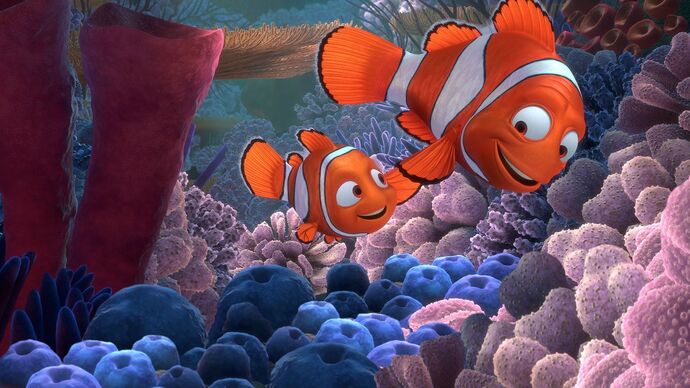
Yeah, we're aware that these fan theories can tend to get a little morbid. Who knew there could be so much death in kids' films?
However, morbid fan theories can be compelling. In the same way that viewers think Carl was dead for the whole of Up, they also think Nemo is dead in Finding Nemo. When a barracuda fish brutally kills Marlin's wife, only one of their eggs remains... Or did it?
It's speculated that Nemo is simply a figment of Marlin's grieving imagination. Unable to deal with the trauma of having his whole family taken away, he hallucinates Nemo as a coping mechanism.
Finding Nemo, then, acts as an allegory for the five stages of grief:
- Denial (believing it's "not safe" for Nemo to go to school)
- Anger (shouting at him for touching the boat)
- Bargaining (makes a deal with Dory to help him track Nemo down)
- Despair (watches Nemo get flushed away)
- Acceptance (he releases control and allows Nemo to live freely)
1. Boo (Monsters, Inc.) Is the Witch (Brave)
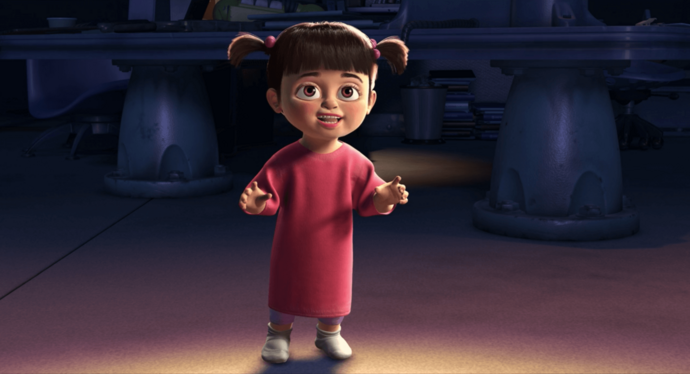
Boo is one of the more ambiguous Pixar characters. She plays a central role in Monsters, Inc., yet we receive very little backstory on her. The fact that she can't really speak doesn't help.
What we do know is that Boo broke our hearts into pieces when she opened her bedroom door at the end of Monsters, Inc. only to be disappointed to find "Kitty" not there.
But what happened to her after Sully rebuilt that door from scratch? Some fans believe Boo grew up to be the Witch in Brave, using the transformational power of the doors to go back to 10th century Scotland.
It's pretty far-out and one of the more complex of the Pixar theories, which also makes it one of the most clever fan theories!
The "Will O' the Wisps" in Brave are a common English folklore, and the Witch believes them to be the source of all magic. Perhaps this is why Boo went back to this strangely specific time and location—to find the source of magic and get back to Sully.
This is backed up by the fact that there's a clear engraving of Sully in the Witch's cave as well as a Pizza Planet truck that—as we previously established—comes from the link between Toy Story and Monsters, Inc.
Maybe the wood she carves in Brave is the same enchanted material that the doors are made from? It's a grand unified theory that, when pieced together (like Boo's door), is beyond impressive!
